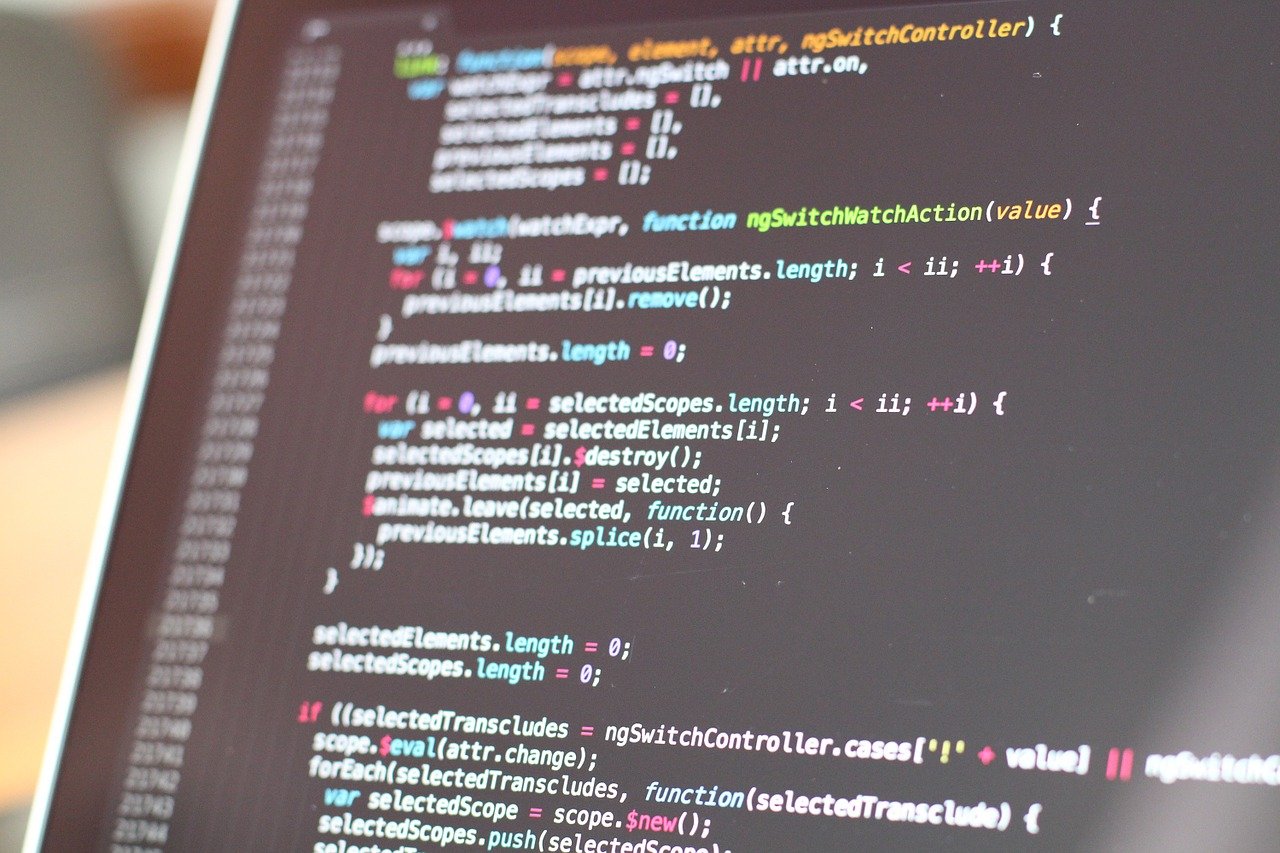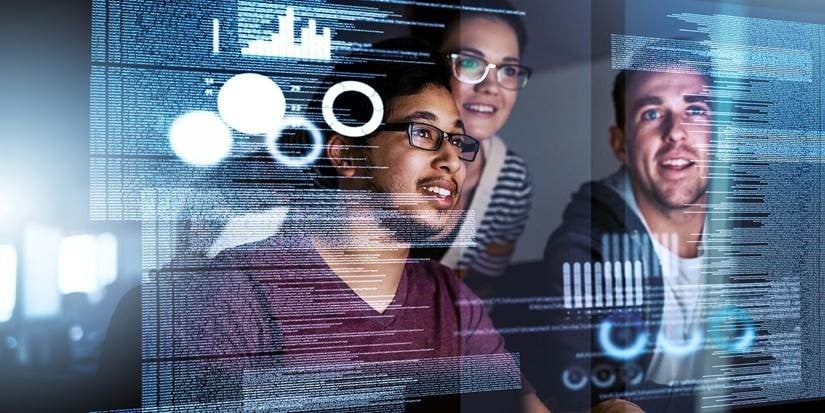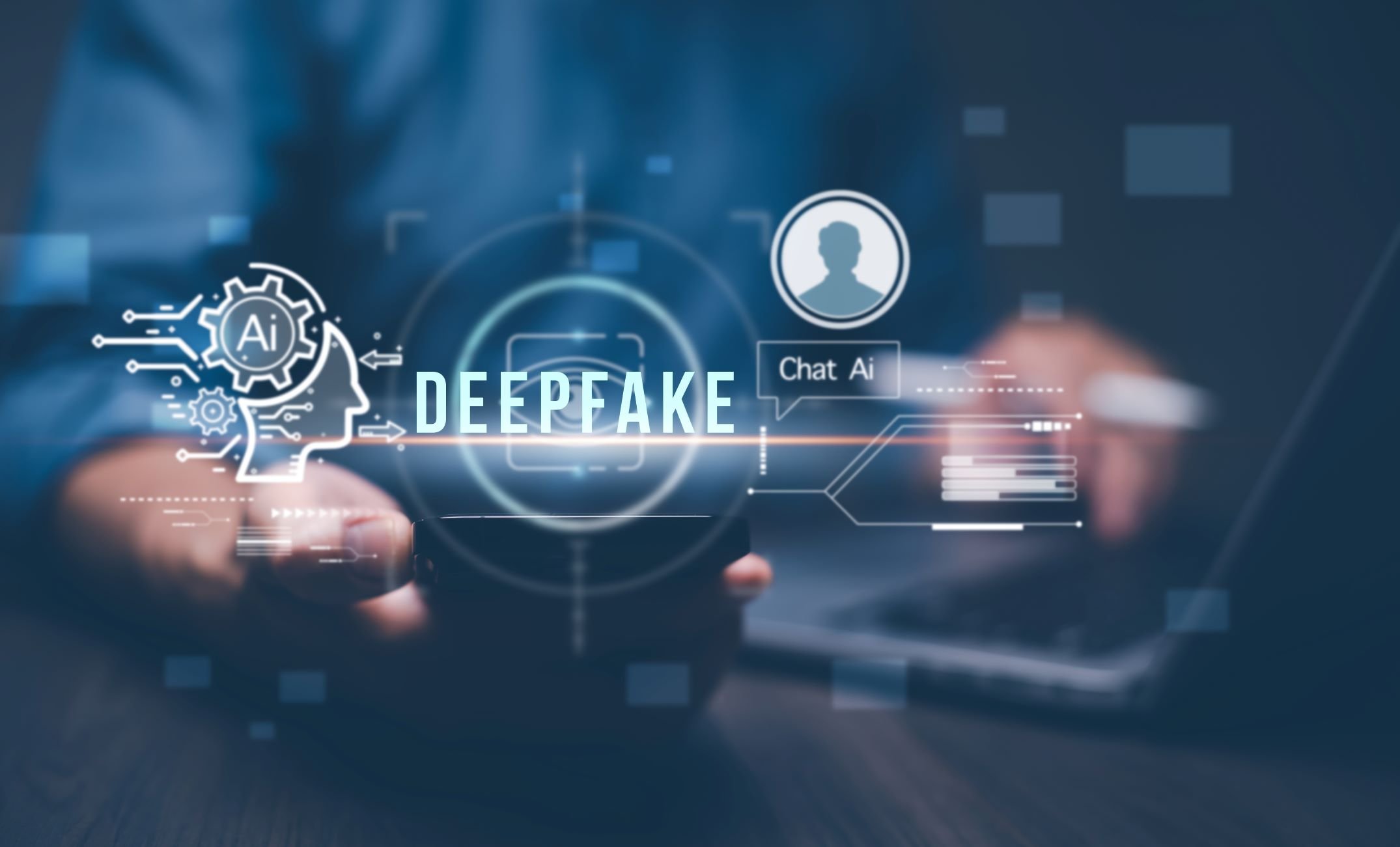This article explores the evolving landscape of human-AI teaming, focusing on its transformative impact, adaptive intelligence in mixed-reality environments, collective intelligence, transparency challenges, and the transition toward collaboration.
-
Introduction to human-AI teaming (understanding the shift, key concepts, and examples of collaborative intelligence)
-
Expanding the definition of collaboration (moving beyond traditional AI roles, emphasizing real-time adaptability and dynamic role changes)
-
Adaptive intelligence in mixed-reality environments (reinforcement learning, emergency response use cases, and user experience improvements)
- Collective intelligence in open science (citizen science, hybrid models, AI-human synergy in large-scale scientific projects, and collaborative knowledge databases like Wikipedia and GitHub)
-
Emerging models of collaborative intelligence (DAOs, Web 3.0, and decentralized finance as examples of new forms of collective decision-making, shared governance, and resource allocation)
-
Overcoming the challenges of human-AI synergy (transparency, trust issues, explainable AI, and the "cold start" problem)
- Conclusion: Automation to partnership (evolution to AI as strategic partners, cognitive load sharing, and alignment with human goals)
Introduction
Today, someone asked whether the rough draft above was written by me, Junior Williams, or by OpenAI's Chat GPT 4o with canvas. I can definitively state it was written by me, utilizing my brain, various notepads, mind-maps, voice notes, text files, rich text files, other language models, and LinkedIn's editing tools for formatting as well. That being said, questions around authenticity are essential—by questioning the authorship of this draft, we're engaging with the very themes of partnership and synergy that are central to the future of collaborative intelligence. It's not about determining whether a human or a machine is the creator, but about appreciating how the fusion of both can lead to outcomes neither could achieve alone.
This issue examines the collaboration between humans and AI, focusing on human-in-the-loop models—a cornerstone of collaborative intelligence where human judgment and machine precision converge in real-time. These models facilitate dynamic and adaptive cooperation. They expand the definition of collaborative intelligence to include not only human-machine teaming but also machine-machine and human-human collaboration. Innovation often arises at the intersection of these diverse forms of intelligence.
Human-AI teaming redefines problem-solving by blending computational power with human intuition and creativity. It transcends task delegation, creating synergies where both entities actively enhance each other’s strengths. With advancements in AI technologies like large language models (LLMs), mixed-reality systems, and multi-modal generative frameworks, the boundary between human and machine capabilities is increasingly blurred. This partnership is unlocking new possibilities across fields such as healthcare, engineering, cybersecurity, and beyond.
In this issue, we examine diverse strategies for human-AI collaboration to tackle challenges and enhance creativity and productivity.
Expanding the definition of collaboration
Collaboration is transforming as AI shifts from a passive tool to an active partner in technical and creative work. Once limited to narrow tasks like data processing, AI now reasons, adapts, and communicates naturally, enabling dynamic, interactive collaboration. This evolution positions AI as a co-creator, reshaping problem-solving and innovation.
A prime example of this evolution is OpenAI's Chat GPT 4o with Canvas, which redefines co-development by providing real-time, context-aware suggestions for software engineering and creative writing. This tool not only assists in generating ideas but also adapts to user feedback, creating a seamless interplay between human creativity and machine intelligence. Similarly, Anthropics Claude Projects excels in managing vast repositories of information and facilitating collaborative design through its ability to process expansive contexts. By integrating these capabilities, AI systems like Claude are becoming indispensable in environments that require both strategic planning and detailed execution.
In research and teamwork, Perplexity Pro Spaces exemplifies how AI promotes deeper collaboration by integrating AI-driven search with personalized knowledge bases. This platform allows teams to work in shared environments while using AI to surface relevant insights and streamline workflows. On the creative side, tools like Midjourney Editor are transforming visual design, enabling users to refine their work iteratively and collaborate with AI to expand their artistic vision while benefiting from its generative capabilities.
Collectively, these advancements illustrate the transition of AI from a passive assistant to an active collaborator across diverse domains. Whether it’s coding software, designing complex systems, conducting research, or creating art, today’s AI tools are facilitating innovation by enhancing human capabilities rather than replacing them. This expanded definition of collaboration underscores the potential for AI to not only augment productivity but also inspire entirely new ways of working that blend human ingenuity with machine intelligence.
Adaptive intelligence in mixed-reality environments
Mixed-reality (MR) and virtual-reality (VR) environments offer some of the most promising frontiers for human-AI teaming. AI’s ability to analyze spatial and contextual cues in MR spaces is leading to new forms of intuitive collaboration. Researchers at the Carnegie Mellon University's Augmented Perception Lab have developed a framework called SemanticAdapt, which uses reinforcement learning to adapt virtual interface layouts in MR based on the user’s current tasks and physical environment. For example, during an emergency response drill, SemanticAdapt can reorganize virtual displays to prioritize critical information based on the responder's actions, ensuring that the most relevant data is easily accessible. This capability significantly enhances user experience by reducing cognitive load and improving task efficiency in dynamic, high-pressure scenarios. The system automatically arranges information in a 3D space, optimizing for clarity, task relevance, and minimizing cognitive overload. This adaptability is crucial in environments where human focus can shift rapidly, such as emergency response scenarios or complex industrial operations.
In the broader context of XR (extended reality) research, these advances are creating platforms where AI can navigate ambiguous, multi-modal inputs—such as gestures, voice commands, and spatial movements—without requiring precise human instructions. The aim is to develop AI systems that "understand" human context and intent at a high level, making them true collaborators rather than passive tools. This vision aligns with the pursuit of technologies that bring us closer to a fully immersive, holodeck-like experience, inspired by Star Trek's The Next Generation, where holograms and AI interact seamlessly.
Leveraging ChatGPT's advanced voice interactions played a significant role in conversationally iterating on drafts of this article, showcasing how AI can support creative processes by providing real-time, iterative feedback. This conversational aspect of AI is not just a tool for efficiency but a partner in the creative process, facilitating a more interactive, iterative form of content creation that further underscores the evolving role of AI in collaborative environments.
Emerging technologies such as Apple Vision Pro, Meta Quest and Ray-Ban AR glasses are pushing the boundaries of these collaborative experiences. Combined with advanced voice, haptic feedback suits, and immersive setups involving wall-to-floor-to-ceiling screens and holograms, we are witnessing early steps towards creating environments akin to the holodeck (pictured above). These tools enable a richer interaction where AI can understand voice commands and physical gestures, making the interaction more natural and reducing the gap between the digital and physical realms.
PSA: Finding balance in demanding situations and environments can be challenging. The approach of using mandalas for kinetic meditation may offer new perspectives—more on this can be found in Finding Balance in Cyber: The Mandalas Approach.
Collection intelligence in open science
Human-AI collaboration is revolutionizing fields traditionally limited by scale and complexity, such as citizen science. Platforms like Galaxy Zoo leverage the combined efforts of volunteers and machine learning algorithms to process astronomical data on a massive scale. In this collaborative model, AI manages routine tasks, like cataloging galaxies, allowing humans to focus on anomalies and complex cases that require deeper analysis. This method not only speeds up research but also enriches it by integrating diverse human insights to further refine AI models.
Platforms like Zooniverse have embraced AI to manage large datasets more efficiently. Wildbook, for instance, uses AI to identify species from volunteer-submitted images, significantly improving data classification accuracy. Advanced deep learning techniques enable rapid and precise analysis of animal footage, with algorithms trained using labeled images. Citizen science accelerates this process by engaging communities to capture and label data, which feeds directly into training these models.
This integration of human effort and AI capability is transforming citizen science into a form of collective intelligence, where creativity and precision converge. In biodiversity monitoring, for example, AI systems dynamically identify key regions for data collection and guide volunteers accordingly, adapting in real time as new data emerges. This adaptability ensures a more strategic use of both human and machine resources, making large-scale scientific efforts more agile and effective.
Such projects highlight the importance of effectively communicating complex ideas to facilitate collaboration. Tools like Claude Artifacts, for instance, enhance clarity by rendering mathematical notation (see example above), enabling precise and structured representations of data. These tools play a critical role in scientific communication and the advancement of platforms like Wildbook and Zooniverse, accelerating problem-solving and fostering deeper collaboration.
Emerging models of collaborative intelligence
Decentralized Autonomous Organizations (DAOs) and Web 3.0 technologies are revolutionizing collaborative intelligence by enabling decentralized decision-making, shared governance, and resource allocation. Web 3.0 emphasizes decentralization, transparency, and user control, leveraging blockchain to create trustless systems where participants interact directly without intermediaries. Unlike traditional Web 2.0 platforms dominated by centralized authorities, these frameworks enable inclusivity and dismantle centralized power structures. DAOs exemplify this shift by using token-based governance mechanisms that empower communities to co-own and co-govern projects.
To illustrate the impact of DAOs on creativity, consider Botto—a compelling example of how these principles can be applied to creativity. As a decentralized autonomous artist, Botto uses artificial intelligence (AI) to autonomously generate thousands of digital artworks weekly without human prompts. Its creative process is governed by BottoDAO, a community of over 15,000 members who vote on which pieces are minted as NFTs and auctioned. This participatory model merges machine creativity with human collective intelligence, allowing the community to curate Botto's output and shape its evolving artistic style.
BottoDAO operates on blockchain technology, using smart contracts to ensure transparency and decentralization. Members influence artistic themes, approve system changes, and guide Botto’s creative direction. Revenue from NFT auctions—exceeding $4 million to date—is distributed among participants, ensuring economic sustainability while rewarding community engagement. This decentralized structure exemplifies Web 3.0 principles by empowering individuals to co-own and co-govern the platform.
One example of Botto’s output is the artwork Quantum Sphere Divides Reality, which reflects the evolving artistic style shaped by both AI algorithms and community input. Botto’s success demonstrates how integrating AI with decentralized governance can transform creative industries, enabling communities to collaboratively shape artistic expression while ensuring equity and transparency.
As projects like Botto continue to evolve, they highlight the transformative potential of DAOs and Web 3.0 technologies to create new forms of collaborative intelligence. These innovations are redefining how art—and other forms of collaboration—are created, owned, and experienced in a decentralized digital age.
The evolution from automated systems to true AI partners comes with its share of challenges. Transparency and trust are major hurdles. For instance, in healthcare, the opacity of AI diagnostic recommendations often leads to reluctance among medical professionals to rely fully on these systems, highlighting the need for explainable AI (XAI) to build trust and accelerate adoption. In many current implementations, AI’s decisions can seem opaque, making it difficult for humans to understand the rationale behind specific actions or recommendations. This lack of transparency can undermine confidence, particularly in fields like finance or healthcare, where the consequences of incorrect decisions can be severe. Solutions like XAI frameworks are being developed to address these concerns, but their application remains limited and context-specific.
Another challenge is the "cold start" problem in adaptive systems. For example, in dynamic mixed-reality environments, AI must have a baseline understanding of user preferences, task hierarchies, and environmental layouts to function effectively. Training such systems requires substantial volumes of synthetic data and sophisticated simulations that approximate real-world variability. Without this foundational data, even the most advanced AI will struggle to provide relevant, context-aware support.
Adding to these challenges is the widespread discussion online about AI limitations, often rooted in point-in-time studies that fail to consider the potential for future advancements. For example, debates about AI’s inability to understand context or exhibit creativity frequently reference outdated benchmarks or narrowly defined use cases. This shortsightedness overlooks the rapid pace of AI evolution and the iterative improvements made possible through human-AI collaboration. Such narratives, while valid within their specific contexts, risk misrepresenting AI’s trajectory and underestimating its potential to overcome current limitations. A more forward-looking perspective is essential to truly grasp the art of the possible with AI as a collaborative partner.
To explore further how responsible AI can be implemented across various sectors, see Responsible AI Implementation in Enterprise and Public Sector.
The journey from automation to true human-AI partnership is reshaping creativity, problem-solving, and governance. As AI evolves from being just a tool, it becomes a strategic collaborator—enhancing human abilities, sharing cognitive loads, and unlocking new creative possibilities. I explore this further in my article, Resilience Under Pressure in High-Stakes Environments. Examples like adaptive intelligence, decentralized creativity, and collective intelligence in open science show how AI is transforming into a deeply integrated partner in human-centered processes.
The future of collaborative intelligence lies in systems that are contextually aware and aligned with human values. Whether in mission-critical scenarios, scientific research, creative arts, or governance, these systems promise to redefine how we think, create, and make decisions. Emerging technologies such as DAOs and Web 3.0 illustrate how AI, working alongside human intelligence, can lead to inclusive and innovative outcomes. This partnership signifies a shift—not just towards efficiency, but towards co-evolution, where human and machine intelligences grow together for societal benefit.
This evolution prioritizes leveraging combined intelligences to benefit society rather than maximizing profit. For example, human-AI collaboration is revolutionizing healthcare with early diagnostics and personalized treatments, advancing education through adaptive learning platforms, and driving sustainability by optimizing resource management in agriculture and energy. This transformation from automation to collaboration—and ultimately partnership—marks AI’s shift from a tool of efficiency to a strategic partner in decision-making and creativity, aligning its capabilities with human-centric values to shape a better future.s in the development and deployment of this transformative technology.
For more insights on managing security concerns in generative AI, see Secure GenAI: Cybersecurity in the Era of Generative AI.
This article originally appeared on LinkedIn here.





